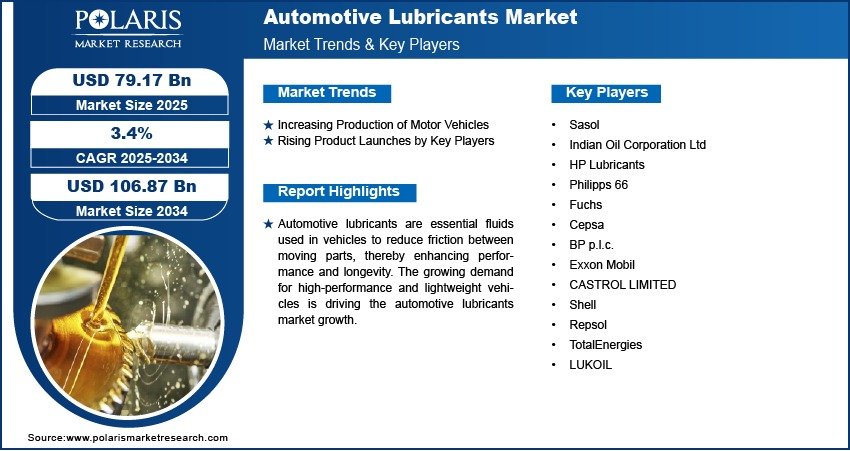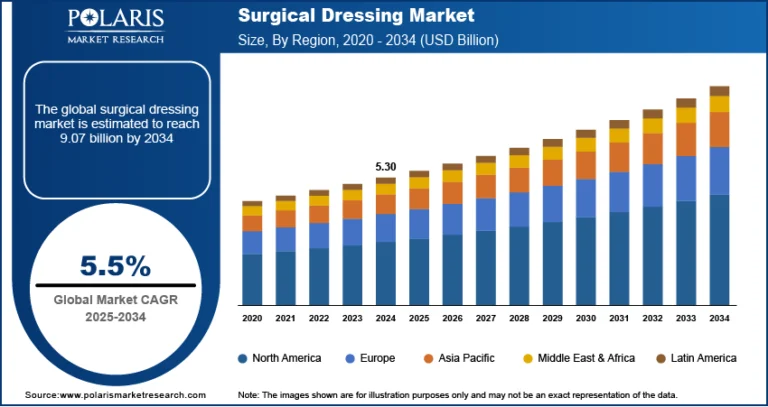Automotive Lubricants Market Projected to Reach USD 106.87 Billion By 2034, Growing at a CAGR of 3.4%

The global Automotive Lubricants market size was valued at USD 76.69 billion in 2024 and is expected to grow from USD 79.17 billion in 2025 to USD 106.87 billion by 2034 , exhibiting a Compound Annual Growth Rate (CAGR) of 3.4% during the forecast period from 2025 to 2034 .
- Increasing Vehicle Production and Ownership: The rising number of vehicles on the road globally is driving demand for automotive lubricants used in engines, transmissions, and other mechanical components to ensure smooth operation and longevity.
- Shift Toward High-Performance Synthetic Lubricants: Demand is growing for synthetic and semi-synthetic lubricants due to their superior performance, longer drain intervals, and compatibility with modern high-efficiency engines.
- Stringent Emission Norms Driving Innovation: Governments worldwide are enforcing stricter emission standards, prompting manufacturers to develop low-viscosity and fuel-efficient lubricants that reduce engine friction and improve overall efficiency.
- Rising Aftermarket Demand: Alongside OEM usage, the aftermarket segment is expanding due to increased vehicle maintenance activities, higher vehicle parc, and growing consumer awareness about regular oil changes and engine care.
- Sustainability and Bio-based Lubricants on the Rise: With increasing environmental concerns, companies are investing in bio-based and eco-friendly lubricant formulations that offer biodegradability without compromising performance.
- Market Size in 2024 – USD 76.69 billion
- Market Size in 2025 – USD 79.17 billion
- Projected Market Size by 2034 – USD 106.87 billion
- CAGR (2025–2034) – 3.4%
Automotive lubricants are essential fluids used in vehicles to reduce friction, protect engine components, enhance fuel efficiency, and extend the lifespan of machinery. These lubricants include engine oils, transmission fluids, gear oils, and greases, available in mineral, semi-synthetic, and fully synthetic variants. With the continuous expansion of the automotive industry and advancements in engine technology, the demand for high-performance lubricants has significantly increased.





